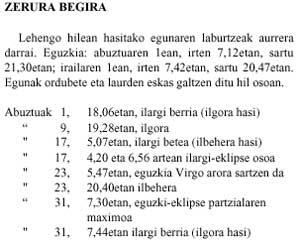How good to paint!
2007/12/01 Lakar Iraizoz, Oihane - Elhuyar Zientzia Iturria: Elhuyar aldizkaria
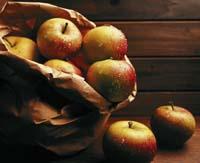
Things have changed a lot since we were hunter-gatherers. First L, we collected the fruits of the plants that were produced spontaneously in the area, and now the farmers grow and exploit fruit plants to obtain their fruits, and then transport them from one point to another in the world. We have to go to the outlets to buy the fruits we want to eat and then we use those we have learned for years when we choose the fruits we buy.
Those who work in the fruit industry also know in what conditions they should put their fruits in the hands of the buyers, how long it takes from when they pick them up until they sell them, and how they should care for them so that the fruits arrive in the best possible conditions. To make all this way and reach the buyer at the optimal time of eating, it is essential to collect the fruits before curing them completely on the plant. Otherwise, if they were picked up cured, they would get damaged to buyers.
Fruit industry
When a fruit is cured it suffers a series of changes: it is sweeter than when it is not cured, has more smell, changes color (it loses the green color and often takes another one), softens, etc. All this gives rise to the ethylene compounds that produce all the organs of the plants during the curing process. The fruits have receptors associated with this compound and when they are tied, processes related to the curing in the fruit begin: degradation of the chlorophyll (loss of green color), production of other pigments (colors) and aromas, change of permeability of the membranes, etc. By changing the permeability of cell membranes, the water stored inside the cells leaves outside and the fruit is softened.
In addition, ethylene produced by a fruit causes the fruits that surround it to begin to produce ethylene, that is, they also cover the fruits of the area.
Those responsible for the fruit industry rigorously control when these changes should occur. Before their distribution in the points of sale, they keep their fruits in the warehouses for a certain time. During their conservation, it is not advisable to cure the fruits and take measures to avoid them. On the one hand, the fruits restrict the inhalation: they cover the fruits with wax or other films, or limit the concentration of oxygen necessary to breathe; on the other, they regulate the temperature: if the temperature is low, the reactions occur at a lower speed in the fruit; therefore, the mentioned changes are slower and, finally, they prevent the influence of ethylene. For this purpose there are two options: to prevent the fruits from producing ethylene (nitrous oxide effect) and to avoid the effect of ethylene on the fruits.
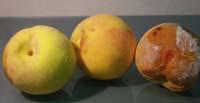
The first option is not very effective, since, although it is not produced by a fruit, if in the area there is an ethylene produced by another fruit, it is cured exactly as if it had produced it. Therefore, the substances that use the most in warehouses are those that avoid the influence of ethylene. The most effective way is the use of compounds that are associated with the same receptors of ethylene but do not produce healing, such as the compound called 1-methylcyapt (or 1-MCP). 1-MCP is associated with the same receptors of ethylene, remaining several hours or days associated with the receptor. Logically, while with 1-MCP, the receptor will not be able to interact with ethylene and there will be no healing reaction.
In addition, they avoid the accumulation of ethylene produced. To do this, they properly ventilate the warehouse to eject from it the ethylene produced and make the air pass from the storage by adsorbent filters, such as aluminum silicate and potassium permanganate.
To take it to the points of sale, that is, when the time comes for its curing, the warehouses change conditions, putting the fruits exposed to the ethylene produced artificially and increasing the temperature. In the new conditions the speed of the reactions of the fruit is modified and changes related to aging are produced.
Once cured and with the desired characteristics, the buyers carry their fruits to the points of sale. It must be said, however, that each type of fruit has its own characteristics and that for its collection, transport and conservation must take into account these characteristics, that is, each type must be preserved in certain conditions of concentration of temperature and oxygen, it can have a certain time of storage, etc. In fact, the right conditions for some fruits can be harmful to others.
And the flavor?
In the processes of collection, transport and storage, the main objective is that the fruits reach the buyer in the best possible aspect, but on the way sometimes we lose something that we do not perceive until eating the fruit: the flavor. The fruits of artificial tanning usually have less flavor than those made in a natural way, since those obtained naturally resist during their stay in the plant a series of processes that those collected before the cured do not suffer.
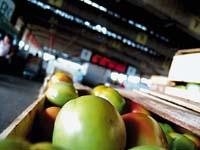
The flavor of a fruit depends in part on its sugar content and the amount of light that the sugar content receives, the more sunlight the more sugar it will have. Therefore, the fruits produced in greenhouses and out of time contain much less sugars in their time than those produced in conditions of light and open place.
In addition to sugars, the volatile substances that produce during their curing provide characteristic flavor and smell to the fruits, so those received before the cure are never as sweet as those received at the time of the curing and do not have the same flavor as the others.
How we will not take with pleasure the fruits and vegetables that the neighbor gives us, friends, uncles or any other that has garden! Or those who receive ourselves on the mountain!
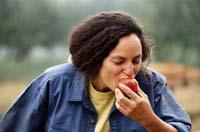

Gai honi buruzko eduki gehiago
Elhuyarrek garatutako teknologia




